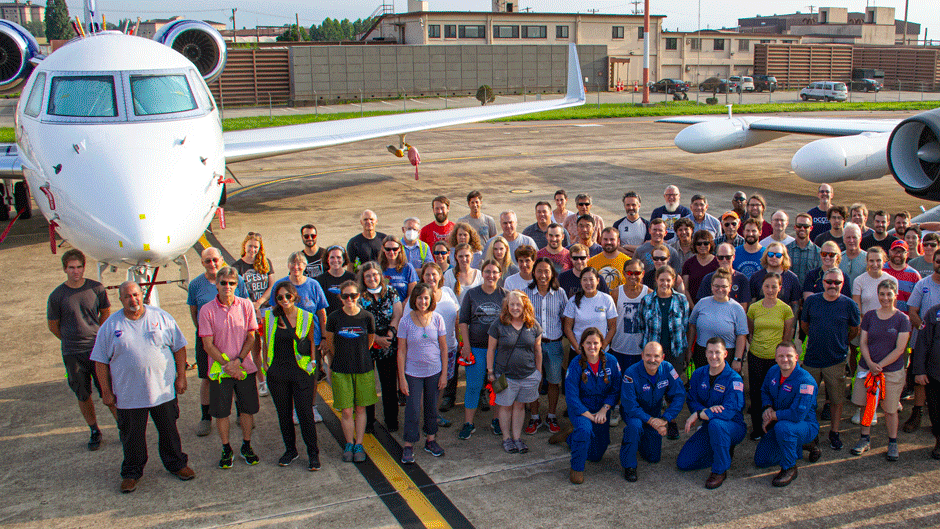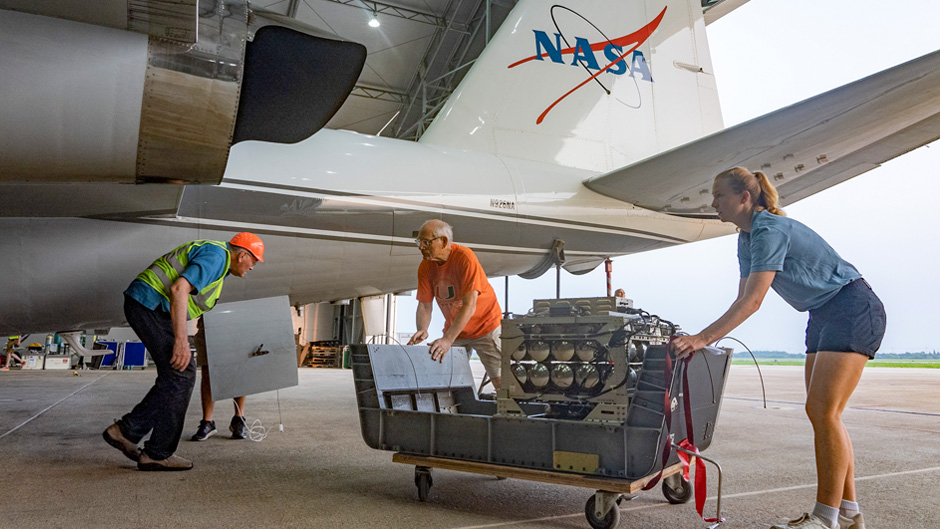The air pollution was first obvious from satellite images, floating above the Asian continent during the monsoon season each summer. Satellites observed elevated levels of carbon monoxide and a few other chemicals, which suggested the presence of numerous pollutants.
However, the satellite images could not unravel the complex mixture present. Now, a team of more than 80 researchers are working to understand what other elements may be reaching the earth’s upper atmosphere from the yearly summer storm system and its associated weather.
Among them are seven University of Miami researchers, including the team’s leader Elliot Atlas, professor emeritus at the University of Miami Rosenstiel School of Marine, Atmospheric, and Earth Science. The team is stationed in South Korea this month alongside other scientists, who are using two specially equipped airplanes, as well as instrumented balloons, to capture air samples and make chemical and aerosol particle measurements from near the earth’s surface to more than 60,000 feet over the western Pacific Ocean. It is all part of an effort led by the National Science Foundation’s National Center for Atmospheric Research and the National Aeronautics and Space Administration(NASA) to better grasp the potential impacts of the massive summer monsoon system.
“We are interested in the Asian monsoon in particular because this circulation happens over an area that is very polluted by man-made activities,” said Atlas, an atmospheric chemist. “This pollution gets sucked up into the upper air circulation and eventually spreads out into the global atmosphere, and the contents of what is going up and what’s spreading out are largely unknown.”

According to NASA, the Asian monsoon is the largest meteorological pattern in the northern hemisphere during the summer. While the rains begin in late June, the monsoon spawns the strongest storms from mid-July through early September. And since polluted air fans out from the storms, the team is spending August at a makeshift lab on Osan Air Base near Seoul collecting samples from the eastern edge of the system.
“Up until now, there has been very little ability to get sensors inside that circulation to measure the chemical and aerosol composition of the air,” Atlas pointed out.
Since the first satellite observations of a large pollutant dome over the Asian continent, there has been considerable international interest to study the Asian monsoon’s impact on atmospheric chemistry and climate. However, the atmospheric phenomenon was difficult to for scientists to study because of its location over Asia with significant logistical problems and political sensitivities.
This project marks the culmination of efforts led by scientists from the United States who had to postpone the project because of COVID-19 related restrictions, according to Atlas. Understanding the composition of the air pollution, as well as the chemical changes driven by the monsoon and how they interact with the atmosphere, could help explain the influence of certain emissions on our atmosphere. It could also help scientists predict how certain human-made activities might impact temperatures on earth. “This will help clarify how human activity continues to affect the climate,” Atlas said.
Currently, Atlas’ team of postdoctoral researchers, Katie Smith and Victoria Treadaway; research scientist Sue Schauffler; and engineers Roger Hendershot, Stephen Donnelly, and Rich Lueb are working from a lab area inside an aircraft hangar to prepare containers that will collect air samples on the two aircraft and to plan their sampling strategy.
The first plane, a Gulfstream V owned by the National Science Foundation, carries a limited number of scientists who can monitor instruments and make adjustments based on observations during flight. Instruments on the aircraft can also make measurements in real time during the flight, sending data to scientists on the ground, Atlas noted.
The second aircraft, a WB-57 F, is a high-altitude plane owned by NASA that focuses on altitudes above the Gulfstream, which includes portions of the lower stratosphere. This aircraft can carry only a pilot and engineer who must wear pressure suits and helmets, and all instruments on the aircraft operate automatically. Atlas’ team uses remote communication to both the Gulfstream V and the WB-57F to control and optimize air sample collection locations.
As one of six scientists planning the Asian Summer Monsoon Chemical and Climate Impact Project, Atlas helped define the entire project’s research plans before leaving the United States. His team’s experiments will also contribute to scientific journal publications that will share their findings in the coming years. He hopes that they will be able to shed light on some of the chemical reactions that happen in the upper troposphere (up to 10 miles above land) and lower stratosphere (12 to 20 miles above land) as a result of the monsoon system.
“We want to be able to predict into the future how the planet responds to the input of chemicals from this region and also to better understand the mechanisms, chemistry, and physics of what happens when these chemicals are released in the atmosphere,” Atlas said. “Based on what we learn, we may be able to predict if future activities change how helpful or harmful [those elements] will be to the earth.”

